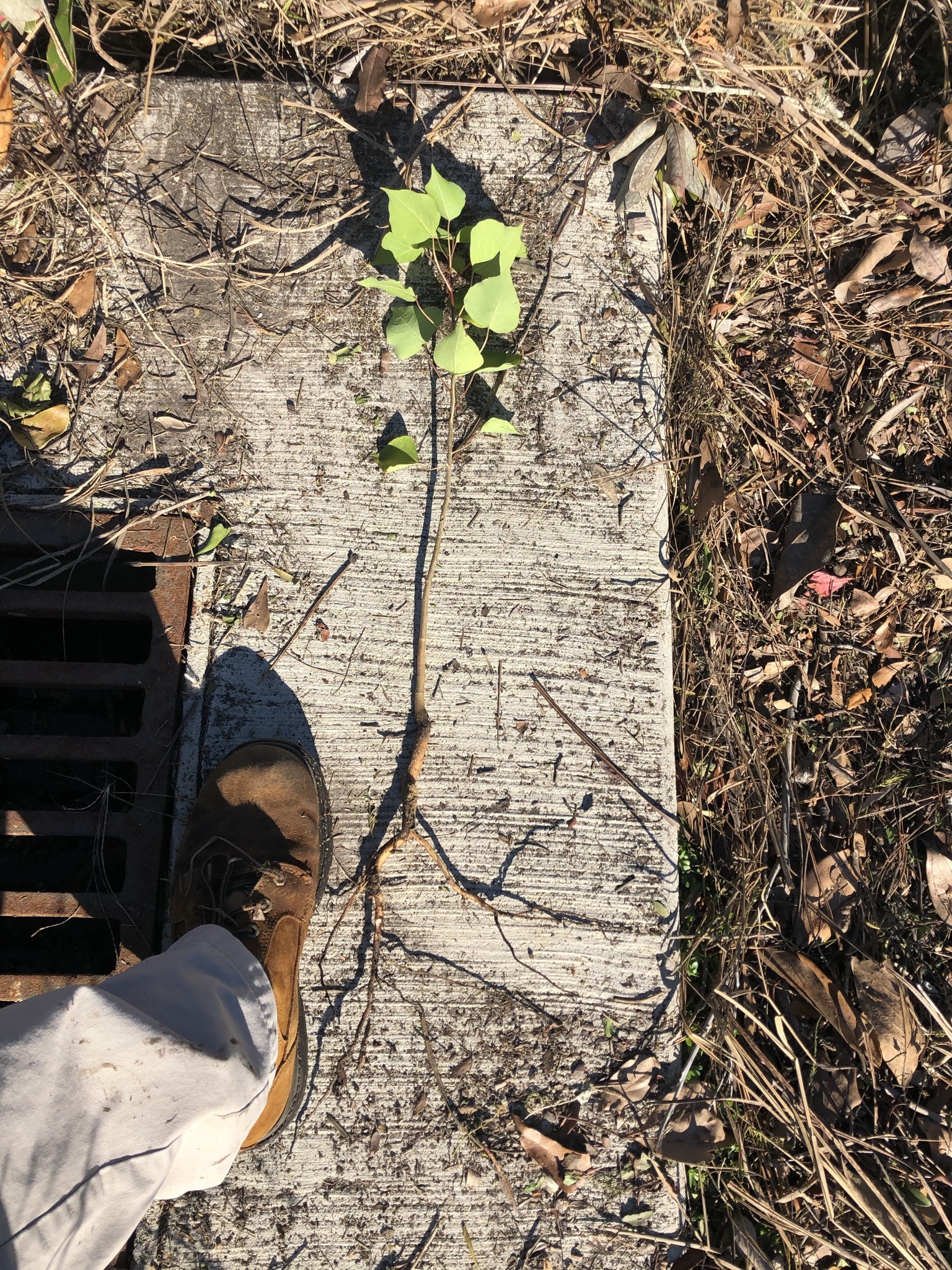Popcorn trees produce one of the most dramatic seeds of any plant. Numerous bright white balls appear like jewels in clusters on the ends of branches, contrasted by the red-orange colored foliage of fall. When not eaten and transported away by birds, seeds are blown by the wind, falling to the ground where they generate multitudes of new plants. This species needs little help to disperse its seeds in fall, but the occurrence of a windstorm during this time, like a hurricane, presents a perfect storm for an even greater spread of one of the most invasive plants in the southeastern U.S.

Being aware of our role in our landscapes and how invasive species spread are good first steps toward helping limit the negative impacts to our habitats. As spring arrives, watching for the newly germinating tallow trees is one way, when they are easily seen and pulled. Collecting and disposing of seeds that fall next fall is another way that can limit the spread to your neighborhood. Replacing that Popcorn, Camphor, or Ligustrums with native plants is also a great option. Although birds seem to favor the seeds of invasive plants, they are less nutritious than those of native species. Think of Popcorn Tree seeds as “junk food” for wildlife – taste good, but not good for you.
So there, I have said it out loud – Popcorn Trees and their “beautiful” fall foliage and seeds are bad for our environment and wildlife. Storms help to spread them even more so than normal and now that you know, you can help reduce the spread. Thanks to my friend Robert Smith (Photobiologist) for the photo of Popcorn Seeds and the idea for this story.
Hope to see you in our great outdoors!